Demand from owner-occupants alone is insufficient to mop up the foreclosure mess. Aided by entreprenuers providing package deals, cashflow investors will stabilize the housing market.
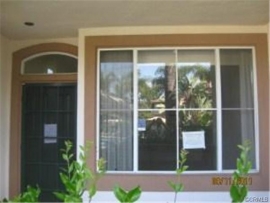
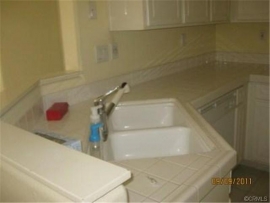
Irvine Home Address … 1305 SOLVAY AISLE Irvine, CA 92606
Resale Home Price …… $275,000

I need more of you,
changin' my rain into sun
More of you,
puttin' my blues on the run
I need more of you,
darling, I need more of you
More, anything less wouldn't do.
Bellamy Brothers — I Need More of You
Shadow inventory can not be absorbed by first-time buyers. There are simply not enough owner-occupants to absorb the inventory due to come to the market over the next several years. Real estate cashflow investors are needed to stabilize the housing market. These investors are the only other source of demand available.
There are investment holdings companies that buy and hold rentals, and they will be part of the solution. I have recently formed Radiant Homes for this purpose. However, due to the practical problems with managing many properties over diverse geographies, it will still fall to individual investors to buy and hold the remaining properties on the market.
I have recently made a change to the business plan of my flipping fund. I will still sell homes to owner occupants in Las Vegas, but while looking for an owner occupant to purchase a property, I am also looking for a renter. Whichever deal I find first will determine the property's fate.
Each home I rent is made available to cashflow investors i reach through this blog and the presentations I do monthly. I decided to make this change to better serve readers who have expressed interest in acquiring these properties, but didn't want to go through all the hassles of obtaining their own, fixing them up, and finding a renter. I do all of that so you don't have to.
If you want to learn more about your options for investing in Las Vegas cashflow properties, please attend the upcoming presentation at JT Schmids on October 12. Though not required, we are asking to please RSVP to sales@idealhomebrokers.com. (click on image below).
As it turns out, the business plan I am switching over to with my flipping fund is gaining popularity as other entrepreneurs are seeing the same opportunity in the wake of the housing bust. 
When Investing in Foreclosures, Turn-Key Is Key
Published: Tuesday, 27 Sep 2011 | 11:16 AM ET
By: Diana Olick
CNBC Real Estate Reporter
It was just hitting 105 degrees in Dallas when Phillip Carter herded a group of Australian investors onto a bus and headed out to see some previously foreclosed properties. Cowboy to cowboy, Carter tells them the Dallas market is ripe for profit, as rental demand surges and rents head higher. The difference in his business model is that the cash is ready to flow, immediately.
“We buy foreclosures in bulk from the banks, REO's, and rehab them and sell them with property management,” says Carter, who sells his properties complete with renters. “It's a turn-key package that provides cash flow.”
I recognized the allure of this business plan not long after my parents went out to Las Vegas this spring. I have convinced them to go to Las Vegas specifically to buy cashflow properties. Since they are recently retired, this was a good time for them, and they are closer to my family here in Irvine.
When they arrived, I showed them all the rentals I had in inventory, but they were apprehensive about actually buying one of them. After about a month, I bought an occupied property, and the tenants asked to stay on. When I told my father, he became excited and asked to buy that one. It was at that point I realized what was holding him back was the lack of assurance of rent from buying an empty property. If it caused my father to be cautious, it must certainly be an objection for others.
Unfortunately, this put me in a dilemma as fund manager. Once I put a renter in a property, I can't sell it to a local owner-occupant. I am committed to selling to a caashflow investor once I rent it. It would take a leap of faith on my part to believe strongly enough in my ability to find investors through the blog to make this change.
After considering the risks and rewards, I felt it was in the best interest of my fund investors to go the rental route. Worst case scenario is the fund owns a number of rental properties I cannot sell, but then the fund would earn a nice return on the rental income. Since the worst case was profitable, I didn't feel I had much to lose.
Carter is promising 20 percent cash return on most of his investments, and his “Texas Cash Cow Investments” is just the business model his largely foreign clients want.
Travis Henley is hitting Kansas, Indianapolis, Memphis and Atlanta, ready to put the relative power of his Australian dollar to work against the still-crumbling US housing market. Carter's properties are just what he's looking for.
“We're looking for cash flow and maybe a bit of appreciation as well, but at this stage we're mainly looking at cash flow,” says Henley.
Ordinarily, real estate investors must chose between properties with good current cashflow and those with good appreciation potential. It's rare to find properties with potential for both. One of the main reasons I am excited about the Las Vegas market is because prices have crashed so much, current cashflow is great, and the prices have overshot fundamental valuations so far to the downside, i believe there is great potential for future appreciation.

Fellow Aussie, Damian Nagus, says the exchange rate alone will offer enough capital appreciation, but he's still looking to hold for a long time.
“The money is patient. I've been investing in Australia for 25 years and own a reasonable amount of property, and so we're here with a ten year horizon,” estimates Nagus.
Anyone considering investing in Las Vegas should also have at least a ten-year horizon if they want to see prices appreciate. For the next few years, prices may go down, but it isn't likely they will go up. It won't be until the foreclosure supply is absorbed that prices will appreciate strongly.
“We view that it's going to be a good five years without much happening, as America tries to get it's way out of where it is now, and in ten years time we will look at where we are and see if we need to sell or just continue to hold.”
The ability to be patient is one of the great features to holding cashlfow properties. If you are obtaining a 8% return for holding, your pressure to sell is nil.
Nagus and Henley think there may be better cash flow in the Atlanta market, but Carter claims Dallas is the best bet now.
Dallas was not a boom-to-bust market, like Phoenix or Las Vegas, and home prices are down just 3 percent annually, according to the S&P Case Shiller home price index released today. That's better than the top 10 and top 20-city composites.
“Dallas is the first market to take off because we're having the largest population increase in history here,” notes Carter. “It's increasing the market in that the inventory is going down very quickly and prices are going up. Rents are going up and appreciation is going up.”
 Texas and Georgia have historically been good cashflow investment markets. The problem with Texas is the onerous property taxes, and neither Texas or Georgia have strong potential for future appreciation. Good job growth will translate to good sales absorption, but not necessarily to higher prices and rapid appreciation. The high property taxes and state laws against mortgage equity withdrawal cause Texans not to bid up their property values like we do here in California.
Texas and Georgia have historically been good cashflow investment markets. The problem with Texas is the onerous property taxes, and neither Texas or Georgia have strong potential for future appreciation. Good job growth will translate to good sales absorption, but not necessarily to higher prices and rapid appreciation. The high property taxes and state laws against mortgage equity withdrawal cause Texans not to bid up their property values like we do here in California.
Carter would like to see the federal government help investors like himself by loosening up some of the financing guidelines at mortgage giants Fannie Mae and Freddie Mac.
So would I. Actually, I would prefer the government to get completely out of the property finance market, but if they are going to be involved, they should encourage cashflow investors to absorb the inventory owner occupants cannot.
His track record and relationships with the big banks have allowed him to make bulk purchases of 30-40 properties at a time, but he'd clearly like to do more.
“The biggest challenge for us right now, honestly, when investors see this opportunity, they think it's too good to be true,” admits Carter, a self-proclaimed “opportunist.” But he's doing a brisk business, with clients from China, India, Canada and a surprising demand from U.S. baby boomers, wary of the stock market. Carter claims he's the largest company doing this kind of turn-key business.
I run into the same problem here in Orange County. People can't believe they can get double the rent for the same investment in Las Vegas. For example, I recently bought a home for some local investors who also own investment property here in Orange County. If I buy them a second property in Las Vegas with the same financial performance as the first, they will have $200,000 tied up in properties which together rent for $2,400. Their $400,000+ OC property rents for $2,400. Same rental income with half the investment. Las Vegas deals really are that much better.
“I guess it's a cowboy business, kind of like commodities,” Carter says as he leads Outback entrepreneurs around his properties. “Instead of doing cattle, we're doing houses.”
Obviously, I like this guy's business model, although I don't think I will comment on men in the Outback “doing cattle.”
IHB night of presentations
We will be gathering at JT Schmids at 5:00 on Wednesday, October 12, 2011, for a happy hour followed by two presentations: The OC Housing Market monthly update, and Cashflow Investing In Las Vegas. We will be giving these presentations on the second Wednesday of every month.
Our first big night of presentations last month was a tremendous success. We had 68 people sign at the door for the first presentation on the OC housing market, and 80 people signed up for the Las Vegas cashflow investment presentation. Everyone enjoyed drinks and appetizers, and a good time was had by all.
We are committed to a philosophy of constant improvement at the IHB, We read through all the presentation feedback, and we have decided on a few changes and enhancements. The most notable of these changes is to get Shevy more involved in the OC housing market presentation. The presentation on October 12th will not have the city-by-city breakdown I did for the first presentation. Instead Shevy will discuss several properties from surrounding communities. Some of these properties will be IHB deals, and some will be properties currently available in the market. Each property has been selected to illustrate a key feature of the current market.
Based on the feedback, we are also going to be adding a new presentation to our monthly list. On the third Wednesday of each month, we will do an advanced workshop on buying REO and short-sale properties. Shevy will conduct most of the presentation as we take a detailed look at several IHB deals with the focus on the specific techniques Shevy used to identify and obtain great deals for IHB clients. This will be a small group workshop intended for more interaction. It is limited to 30 attendees (unless you don't mind standing in the back). RSVPs are preferred.
On the fourth Wedneday of each month, we will be giving our basic first-time homebuyers presentation, and I will be presenting a small group workshop on Las Vegas cashflow properties.
The ongoing collapse of Brio pricing
 Does anyone remember OC Fliptrack? It's a private blog now, and I don't know if the author still updates it. That blogger was an inspiration to me. He opened my eyes to how much fun blogging could be, and he helped me break the chains of conformity which dooms so many bloggers and reporters.
Does anyone remember OC Fliptrack? It's a private blog now, and I don't know if the author still updates it. That blogger was an inspiration to me. He opened my eyes to how much fun blogging could be, and he helped me break the chains of conformity which dooms so many bloggers and reporters.
OC Fliptrack lived in Brio for a time, and he liked to write about the insane prices there. The one-bedroom condos apartments peaked at over $400,000. Now, these units are being fire-sold for $275,000.
Properties like this were most often bought with Option ARMs by people who had no hope of affording a fully ammortized payment. In fact, most of these buyers made the minimum payment which was often less expensive than a competing rental. With the promise of ever-increasing prices, serial refinancing, and unlimited HELOC riches, buyers put nothing down and took a free ride. Five years later, and the banks are still cleaning up the mess.
——————————————————————————————————————————————-
This property is available for sale via the MLS.
Please contact Shevy Akason, #01836707
949.769.1599
sales@idealhomebrokers.com


Irvine House Address … 1305 SOLVAY AISLE Irvine, CA 92606
Resale House Price …… $275,000

Beds: 1
Baths: 1
Sq. Ft.: –
-/SF
Style: One Level
View: Pool
Year Built: 1996
Community: Westpark
County: Orange
MLS#: C11127019
Source: CRMLS
Status: Active
On Redfin: 3 days
——————————————————————————
Spacious 1 bedroom, 1 bathroom condo in great condition located in the beautiful Brio neighborhood. Attached garage. Pool view from the front patio and just steps away from the pool entry gate. Must see!
——————————————————————————————————————————————-
Proprietary IHB commentary and analysis ![]()
Resale Home Price …… $275,000
House Purchase Price … $182,000
House Purchase Date …. 5/1/2001
Net Gain (Loss) ………. $76,500
Percent Change ………. 42.0%
Annual Appreciation … 4.0%
Cost of Home Ownership
————————————————-
$275,000 ………. Asking Price
$9,625 ………. 3.5% Down FHA Financing
4.00% …………… Mortgage Interest Rate
$265,375 ………. 30-Year Mortgage
$80,816 ………. Income Requirement
$1,267 ………. Monthly Mortgage Payment
$238 ………. Property Tax (@1.04%)
$0 ………. Special Taxes and Levies (Mello Roos)
$57 ………. Homeowners Insurance (@ 0.25%)
$305 ………. Private Mortgage Insurance
$220 ………. Homeowners Association Fees
============================================
$2,088 ………. Monthly Cash Outlays
-$197 ………. Tax Savings (% of Interest and Property Tax)
-$382 ………. Equity Hidden in Payment (Amortization)
$13 ………. Lost Income to Down Payment (net of taxes)
$54 ………. Maintenance and Replacement Reserves
============================================
$1,577 ………. Monthly Cost of Ownership
Cash Acquisition Demands
——————————————————————————
$2,750 ………. Furnishing and Move In @1%
$2,750 ………. Closing Costs @1%
$2,654 ………… Interest Points @1% of Loan
$9,625 ………. Down Payment
============================================
$17,779 ………. Total Cash Costs
$24,100 ………… Emergency Cash Reserves
============================================
$41,879 ………. Total Savings Needed
——————————————————————————————————————————————————-



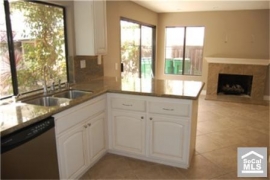












 Far from being in a hurry to foreclose, Wells Fargo let the former owners of today's featured property squat for two years before foreclosing on them.
Far from being in a hurry to foreclose, Wells Fargo let the former owners of today's featured property squat for two years before foreclosing on them.





















 It's entirely possible the 4% interest rates currently available will cause prices to bottom this fall and winter, but I rather doubt it. What is also possible is that payment affordability may bottom this fall and winter. That scenario is far more likely than seeing an absolute bottom in prices. A $400,000 property purchased at a 4% interest rate is less expensive to own than a $350,000 property purchased with a 6% interest rate.
It's entirely possible the 4% interest rates currently available will cause prices to bottom this fall and winter, but I rather doubt it. What is also possible is that payment affordability may bottom this fall and winter. That scenario is far more likely than seeing an absolute bottom in prices. A $400,000 property purchased at a 4% interest rate is less expensive to own than a $350,000 property purchased with a 6% interest rate.






 IHB: He is correct. If we implement some of these foolish ideas, would would inflate a mini-bubble which would extend the pain of the housing market another decade but create some short-term benefit to the real estate industry.
IHB: He is correct. If we implement some of these foolish ideas, would would inflate a mini-bubble which would extend the pain of the housing market another decade but create some short-term benefit to the real estate industry.


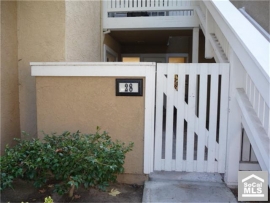
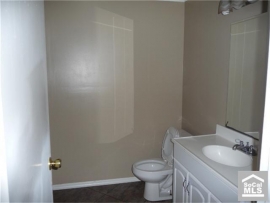
.png)


 A group whose original payment motivations has been lost? LOL! That is the best euphemism I have read in ages. The group they are talking about was motivated to pay as long as prices were going up and they were given more Ponzi debt to make their payments. Once the HELOC money was not forthcoming, they lost their motivation. ~~ giggles to self ~~
A group whose original payment motivations has been lost? LOL! That is the best euphemism I have read in ages. The group they are talking about was motivated to pay as long as prices were going up and they were given more Ponzi debt to make their payments. Once the HELOC money was not forthcoming, they lost their motivation. ~~ giggles to self ~~.png)



